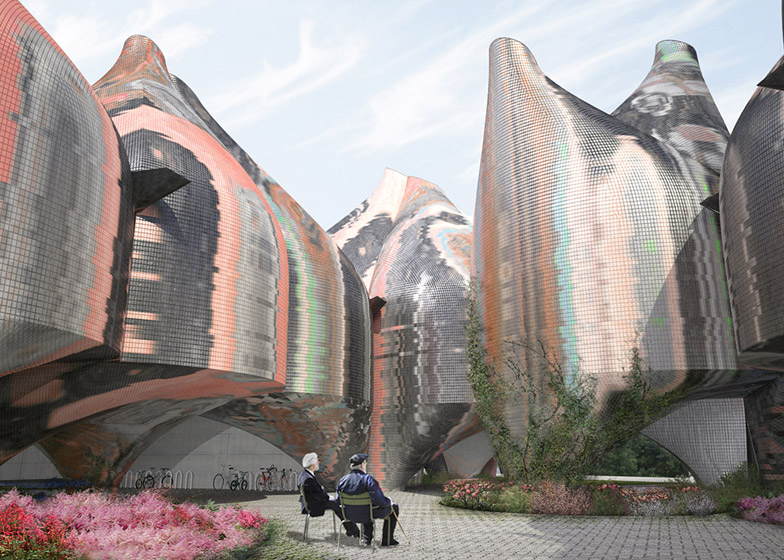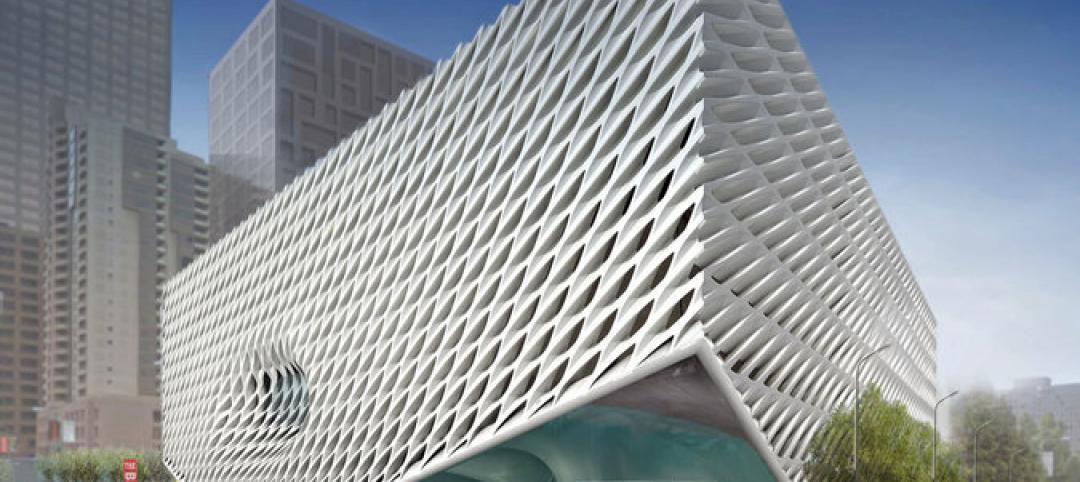After holding an international design competition for the Bauhaus Museum Dessau, an influential German art and design school, two winners have been named, reports Dezeen.
The two proposals could not look any more different.
The first, designed by Spanish architect Gonzalez Hinz Zabala and landscape firm Roser Vives de Delás, is a rectangular black bar bridge made of glass that sits upon a glazed lower floor (pictured below).
"Our project offers playful contrasts as heaviness and lightness, opacity and transparency, system and flexibility, order and spontaneity," says the Gonzalez Hinz Zabala website.
 Gonzalez Hinz Zabala's museum design. Rendering courtesy Gonzalez Hinz Zabala, via Dezeen
Gonzalez Hinz Zabala's museum design. Rendering courtesy Gonzalez Hinz Zabala, via Dezeen
The second is a colorful set of structures consisting of connected pods that create walkways underneath (pictured at top). This concept was created by New York architecture studio Young & Ayata and landscape architect Misako Murata. It has a "concrete base and timber lattice frame structure clad with sintered glass tiles," according to the Young & Ayata website.
The winners were chosen by a jury that evaluated anonymously-presented submissions. It is still uncertain if the museum will declare an ultimate winner or if it will incorporate both designs, according to Dezeen.
"The two first-prize winners are very diverse," said Chris Dercon, Director of London's Tate Modern, who was quoted in the Dezeen story. "It will be a chance to start the discussion in the international public and with experts. To be the beginning of the new, Dessau and the Bauhaus are ideal places."
Related Stories
| Jun 18, 2014
Arup uses 3D printing to fabricate one-of-a-kind structural steel components
The firm's research shows that 3D printing has the potential to reduce costs, cut waste, and slash the carbon footprint of the construction sector.
| Jun 16, 2014
6 U.S. cities at the forefront of innovation districts
A new Brookings Institution study records the emergence of “competitive places that are also cool spaces.”
| Jun 13, 2014
First look: BIG's spiraling museum for watchmaker Audemars Piguet
The glass-and-steel pavilion's spiral structure acts as a storytelling device for the company's history.
| Jun 12, 2014
Tod Williams Billie Tsien Architects' design selected for new UCSC facility
The planned site is a natural landscape among redwood trees with views over Monterey Bay, a site that the architects have called “one of the most beautiful they have ever worked on.”
| Jun 12, 2014
Austrian university develops 'inflatable' concrete dome method
Constructing a concrete dome is a costly process, but this may change soon. A team from the Vienna University of Technology has developed a method that allows concrete domes to form with the use of air and steel cables instead of expensive, timber supporting structures.
| Jun 11, 2014
David Adjaye’s housing project in Sugar Hill nears completion
A new development in New York's historic Sugar Hill district nears completion, designed to be an icon for the neighborhood's rich history.
| Jun 9, 2014
Green Building Initiative launches Green Globes for Sustainable Interiors program
The new program focuses exclusively on the sustainable design and construction of interior spaces in nonresidential buildings and can be pursued by both building owners and individual lessees of commercial spaces.
| Jun 9, 2014
Eli Broad museum files $19.8 million lawsuit over delays
The museum, meant to hold Eli and Edythe Borad's collection of contemporary art, is suing the German company Seele for what the museum describes as delays in the creation of building blocks for its façade.
| Jun 4, 2014
Want to design a Guggenheim? Foundation launches open competition for proposed Helsinki museum
This is the first time the Guggenheim Foundation has sought a design through an open competition. Anonymous submissions for stage one of the competition are due September 10, 2014.
| May 29, 2014
7 cost-effective ways to make U.S. infrastructure more resilient
Moving critical elements to higher ground and designing for longer lifespans are just some of the ways cities and governments can make infrastructure more resilient to natural disasters and climate change, writes Richard Cavallaro, President of Skanska USA Civil.















